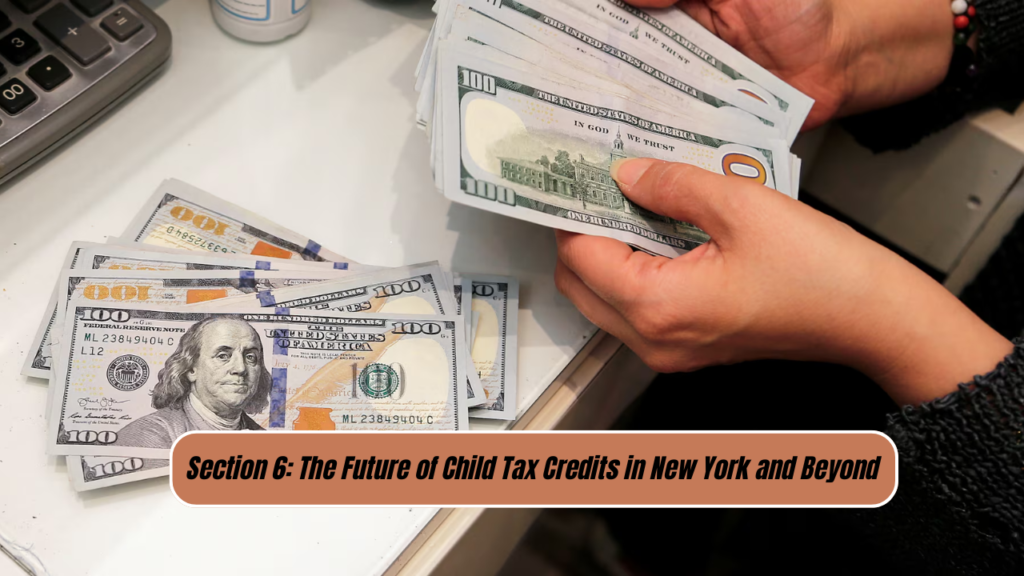Introduction
- Overview of the New York Child Tax Credit (CTC)
Provide a general introduction to the Child Tax Credit, explaining its purpose to support families with children.
Highlight its significance for New Yorkers in 2025, focusing on the $1,000 payment per eligible child.
Briefly introduce the concept of direct deposit as a convenient method of payment for eligible families. - Purpose of the $1,000 NY CTC in 2025
Explain the reason behind introducing this additional tax credit, especially in the context of ongoing financial recovery efforts post-pandemic and rising costs of living.
Mention how this initiative is expected to help low- and middle-income families.
Section 1: What is the New York Child Tax Credit (CTC)?
- Federal vs. State Child Tax Credit
Provide a comparison between the federal Child Tax Credit and the state-level New York CTC.
Discuss how the federal government introduced larger child tax credits in previous years, and how the state of New York created its own version to benefit local families. - History of the NY Child Tax Credit
Explore the background and history of the NY CTC, particularly its evolution and expansion over time.
Discuss the political and economic context leading to the establishment of this state-level benefit, including previous iterations and any changes made in 2025. - Eligibility and Benefits of the NY CTC
Outline the benefits of the $1,000 direct deposit payment for eligible families in New York. Discuss the number of children that can be covered under the credit and the total amount parents can receive.

Section 2: Who is Eligible for the $1,000 NY Child Tax Credit?
- Income Limits for Eligibility
Detail the income thresholds for families to qualify for the NY CTC, and how these thresholds are calculated based on filing status and adjusted gross income (AGI).
Explain how the eligibility is affected by income caps and phase-out limits for higher earners. - Age Requirements for Children
Discuss the age of children that qualify for the $1,000 tax credit (typically under age 17) and how this is verified. - Residency Requirements
Specify the residency requirements for families to qualify for the NY CTC, including details like proof of New York residency and whether non-citizens or mixed-status families are eligible. - Other Considerations
Examine other eligibility factors, such as filing status (single, married filing jointly, head of household) and the role of dependents, as well as any exclusions or restrictions.
Section 3: How Will the $1,000 NY Child Tax Credit Be Distributed?
- Direct Deposit Method
Explain the benefits of direct deposit as the chosen distribution method for the NY CTC. Discuss why it is efficient and secure for families.
Mention potential delays and the need for families to have an active bank account to receive payments. - Timeline for Payments
Provide information on when eligible families can expect to receive the $1,000 payments, including details on the payment schedule (monthly, lump sum, or based on tax filings). - How to Apply for the NY CTC
Walk through the process of applying for the CTC.
Explain how eligible families can claim the benefit during tax season and the necessary forms or online portals that they need to use to apply for direct deposit.
Section 4: The Economic Impact of the $1,000 NY CTC on Families and Communities
- Immediate Financial Relief for Low-Income Families
Examine the direct impact of $1,000 per child on families struggling with rising costs of living, especially food, healthcare, and housing.
Include potential changes to spending habits due to the additional funds and how families may prioritize essentials. - Support for Education and Childcare Costs
Discuss how the NY CTC will help families pay for education-related expenses, such as school supplies, after-school programs, and childcare.
Highlight how these benefits could directly impact children’s well-being and academic success. - Long-Term Impact on the New York Economy
Discuss how families’ increased purchasing power can stimulate local economies, especially small businesses in New York.
Consider the broader implications of enhanced child tax credits on state revenues and social services. - Potential Impact on Poverty Rates
Analyze the potential for the $1,000 payment to help reduce poverty rates in New York, particularly among children, and explore the effects on wealth inequality.
Section 5: Challenges and Criticisms of the $1,000 NY CTC
- Potential Disqualification Due to Income Phase-Outs
Discuss the concerns that families near the income limits might be excluded from receiving the $1,000 credit.
Examine the implications for middle-class families that might just miss out on the benefit. - Complexity and Bureaucracy in the Application Process
Highlight potential complications in the application process, including confusion over eligibility, necessary documentation, or delays in payment distribution. - Impact on State Budget
Debate the fiscal impact of the NY CTC on the state budget. Does the state have the resources to continue offering this credit long-term without sacrificing funding for other services? - Effectiveness of One-Time Payments
Criticize the effectiveness of a one-time payment in addressing long-term financial stability for families. Could recurring payments or higher amounts be more impactful?

Section 6: The Future of Child Tax Credits in New York and Beyond
- Expansion of Child Tax Credits
Speculate on the possibility of New York expanding the CTC in the future. Could the state increase the $1,000 amount or broaden eligibility? - The Role of State and Federal Governments
Discuss how the federal government could follow New York’s lead and make permanent changes to the Child Tax Credit, or if other states might implement their own versions of the CTC. - Alternative Ways to Support Families
Suggest other policy measures that could complement the CTC, such as affordable housing programs, universal basic income (UBI), or further tax relief initiatives for low-income families.
Conclusion
- Summary of the NY Child Tax Credit
Recap the benefits of the $1,000 direct deposit payment for eligible families, focusing on its role in reducing financial hardship and supporting children’s education and well-being. - Impact on New York’s Economy
Highlight the potential economic benefits to local economies and small businesses. Discuss how the CTC is part of a broader effort to support the state’s recovery. - Final Thoughts
Reflect on the future of child tax credits and how it aligns with broader social welfare policies. Consider whether this type of assistance could become a permanent feature of state policy.
FAQs
1. Who is eligible to receive the $1,000 NY Child Tax Credit?
Eligibility is based on income, with phase-out limits. Families with children under 17 who meet the income requirements can qualify for the $1,000 direct deposit payment.
2. How can I apply for the $1,000 NY CTC?
Families can apply for the credit by filing their tax returns or using the New York State online portal for direct deposit information.
3. When will I receive the $1,000 CTC?
The payment will be distributed based on your tax filing, and you can expect to receive the payment within weeks after your filing is processed.
4. Do I need to pay taxes on the $1,000 NY CTC?
No, the $1,000 Child Tax Credit is not taxable income. It is a benefit designed to reduce the cost of raising children.
5. Can families with higher incomes receive the $1,000 payment?
Families with income above a certain threshold may not qualify or may receive reduced payments due to income phase-outs.



